
I was trying to get a negative view of Comet Lovejoy’s tail to show the most detail and I stumbled upon this view. It looks just like an eyeball. LoL! 🙂
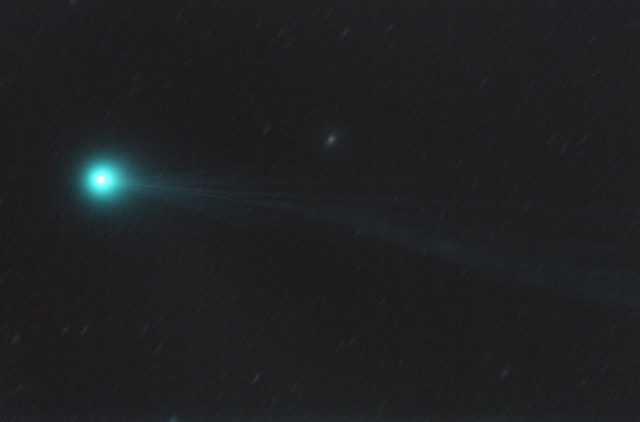
Click here to see an extra-large version of the above.
Here’s the StarStreaks version:
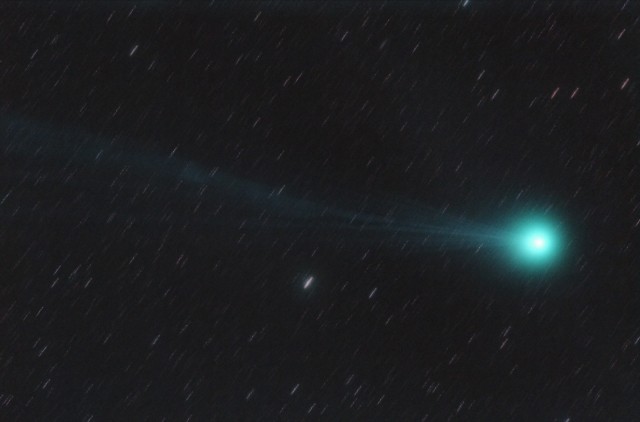
Finally, here’s the StarFreeze version:
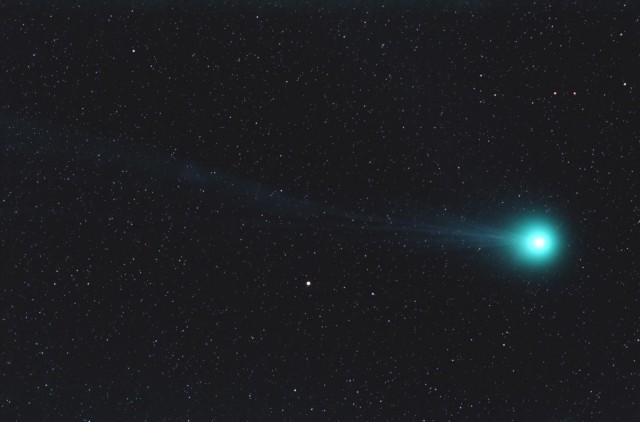
I don’t shoot very many deep sky images with a moon past first quarter, but with comets I can make an exception. Lovejoy is a really photogenic comet and it even looks good in poor conditions. Clouds came in and I had to stop imaging after shooting less than 20 sub-images. But, with this comet, 51 minutes of integration was enough to show it without blurring due to the tail rotation that is evident in my previous animated GIF images.
Speaking of animated GIF’s, I created one with the last 3 days of images. On the second day, I put two images in – one from the beginning of the imaging session and one at the end of the session. It doesn’t show much except the tail flapping around. Part of that might be due to a difference in camera orientation. Anyway, I include it below as another part of the documentation of Comet Lovejoy Q2’s activity:

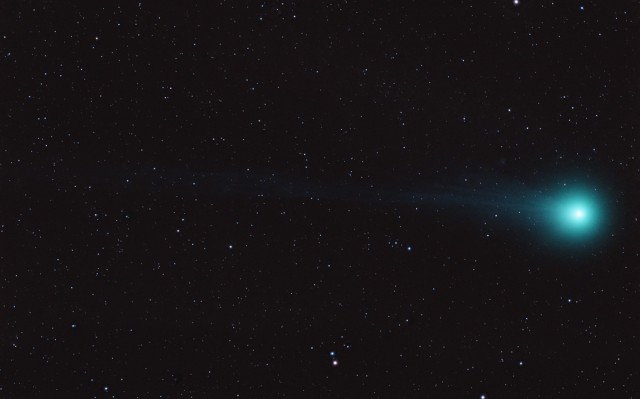
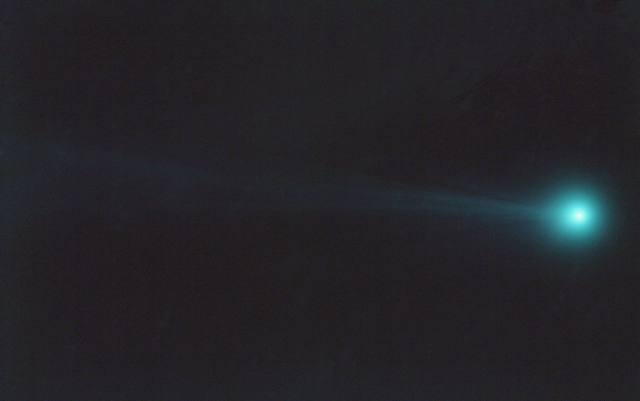
My prediction that the tail of Comet Lovejoy would display a structure seen 9 days before the date of this image has failed. There is no resemblance to the appearance of the comet from 9 days before and the comet actually exhibits features I have not seen before.
Very strong moonlight hindered getting good images. The moon was just past first quarter and was right below the comet. I guess I’m lucky to get what I got. I’m still investigating the rotation aspect of the tail structures and why it appears to take 9 days to complete one revolution.

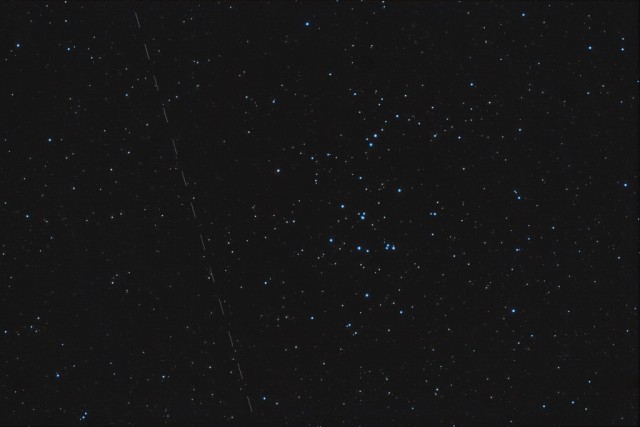
I was shooting Comet Lovejoy and this event was going down before midnight, so I slewed over and caught some images of it.
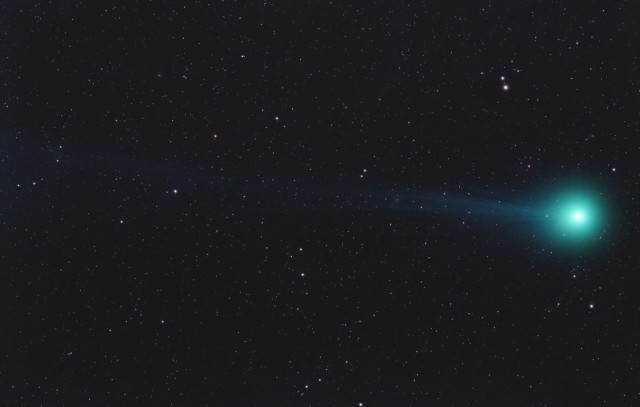
With the moon only a few degrees away in the sky and just past 1st quarter, imaging Comet Lovejoy Q2 was iffy at best. Well, I did it anyway and here are the results. Since the comet is relatively bright, it can be imaged with the right filters and exposure.

More evidence that the comet is rotating or spinning around an axis. This is just over 3 hrs of time and the angle of rotation in that time looks to be about 5 degrees. So, if we take 360 degrees and divide by 5 degrees we get 72, which is how many 3 hr periods to total one rotation. 72 times 3 hrs = 216 hours total time for 1 rotation. 216 divided by 24 hrs = 9 days. Bingo!
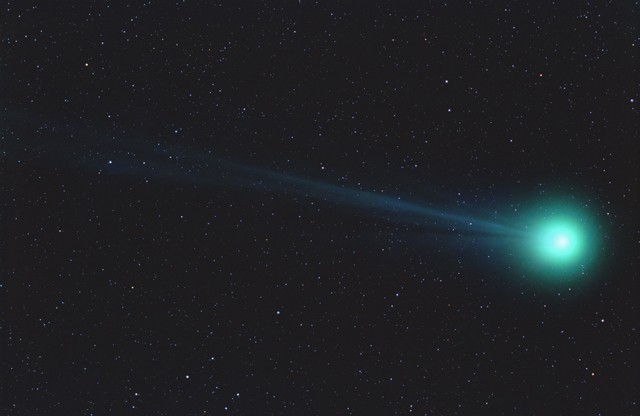

This image should correspond to my image from Jan 16th, 2015 (UT.) The resemblance is striking, especially the head area. However, it does look like this one has just a little less width and therefore is turned at slightly more of an angle than the one from Jan 16th.
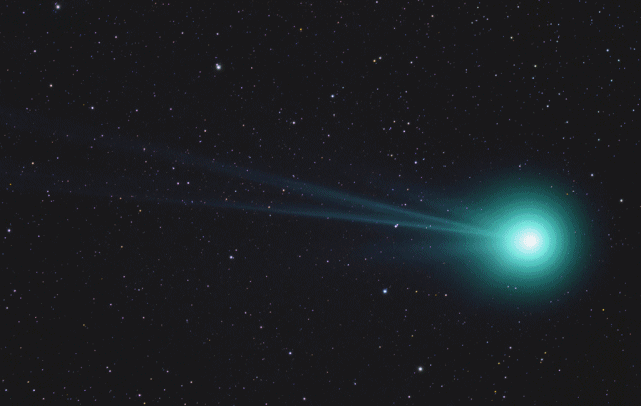
Well, well… the comet is spinning. Possible revolution of about 9 days. Then, the same features should show up again and again in a repeating pattern every 9 days. Well, let’s take a look, then:
If we go back in time 9 days to January 10th, 2015 UT, images of the comet should look similar to the 1st image in my animation. So, I went to Spaceweather’s Comet Gallery and found these images from the day in question. Here is a partial list:
Taken by Gianni Cerrato (xamad)
There you go. Almost exact matches. The comet changes but it also doesn’t. It repeats a pattern because it is rotating. We see the same tail structures every 9 days, at least in this part of the apparition. On Tuesday, Jan 27th, 2015 CST (Wed Jan 28th, UT, ) the comet should present the same structures again as in my 1st image.
Unfortunately, the Moon will be just past 1st quarter and just to the southeast of Comet Lovejoy, so getting enough detail of the dim tail features will be difficult. I might try my Lumicon Deep Sky filter on it with the Canon 200mm F/2.8 telephoto to see if that blocks some of the moonlight.

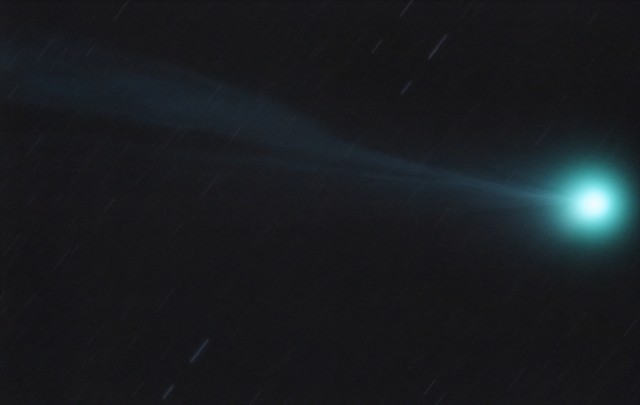
The last image I took of Comet Lovejoy before the weather changed and it clouded up and rained. There is a moon out now and the window to image Comet Lovejoy will get smaller and smaller as the rest of the month progresses.